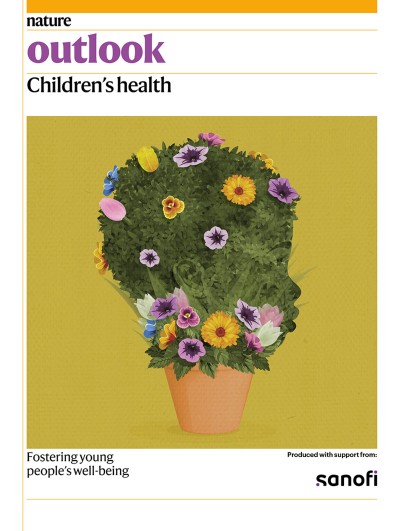
Maartje Boer.
Does frequent engagement with social-media platforms such as Instagram, Snapchat and TikTok affect the well-being of adolescents? Maartje Boer, who studies problematic social-media use and is based at Utrecht University in the Netherlands, says that for many teenagers, social media might not be as harmful as some adults fear.
How do you define social-media addiction?
Table of Contents
Social-media addiction is not yet recognized in a diagnostic manual, but we define it using nine symptoms of addiction, similar to those of Internet gaming disorder. For example, one symptom is preoccupation, when someone thinks constantly about the moment that they can use social media again. Another is withdrawal. This is when someone feels anxious or stressed because they can’t use social media. Another example is when someone displaces important activities to use social media instead. For instance, they lose interest in hobbies such as sporting activities, or neglect school work. When six or more symptoms of addiction are present in an adolescent, we define their social-media use as problematic. The work of my research group disentangles the relationship between problematic use of social media and the frequency of social-media use, and how these factors relate to adolescent well-being.

Part of Nature Outlook: Children‘s health
Is the frequent use of social media harmful?
In our research, we have seen that when an adolescent shows symptoms of addiction, then there is reason to be concerned. But just spending a lot of time on social media is not necessarily a worry. In the Netherlands, most children aged 11 to 16, for example, show a high intensity of use and spend a lot of time on social media without any addiction-like symptoms. The proportion of adolescents whose use of social media is problematic is small — in the Netherlands in 2021, 5.3% of 11- to 16-year-olds showed more than 6 addiction-like symptoms (see go.nature.com/3uvmpzw; in Dutch). We have also looked at behaviour in 11- to 15-year-olds across Europe and Canada, using 2017 and 2018 data, and on average 7.6% showed a problematic number of symptoms1.
So are parental worries misplaced?
I don’t want to say that intensive use is not concerning at all. In another study, we distinguished between three groups: normative users, who show one or no symptoms; at-risk users, who show 2–5 addiction symptoms; and problematic users, who show 6–9 symptoms2. In the Netherlands, about 30% of youngsters are in the middle at-risk group. We see that these adolescents experience more problems with sleep, mental health and school. We can say from our research that the more symptoms of addiction that an adolescent has, the higher the probability of experiencing these issues. So, although the percentage of adolescents that show problematic use is low, when a few symptoms are present there is still reason for concern.
Are there any positive effects of social-media use?
As part of an international effort in 2017 and 2018 to study mostly European and Canadian adolescents, we found that young people who are intensive users — those who use social media throughout the day to communicate with friends — report more peer support than do non-intensive users3. So here we see the beneficial effects of intensive social-media use. The exception is for people whose use of social media is problematic — those who show many symptoms of addiction. They experience less support from friends than do non-problematic users.

More from Nature Outlooks
For other indicators of well-being, the findings were more nuanced. For example, in countries where intensive use was common, because the percentage of intensive users was high in the adolescent population, intensive users reported more life satisfaction than did non-intensive users. In countries where intensive use was uncommon, intensive users report less life satisfaction than do non-intensive users.
What’s your advice for parents who are concerned about social-media use?
Many adolescents across many countries use social media intensively; it is standard behaviour and is not often cause for concern. Our research has found that social media can contribute to certain aspects of adolescent well-being. Young people share their experiences and feelings on social media, and they can talk to their friends, which is important for development of their identity. Neglecting that could cause friction — if a parent constantly frames social-media use in a negative way, young people might not feel understood, as has been suggested in some qualitative studies published over the past few years4,5. But it is important to recognize when social-media use is becoming problematic, because we consistently see that this can have detrimental effects.
Parents might want to take a smartphone away if they feel their child’s engagement with social media is problematic. But research6 suggests that reactive restrictions such as this, as opposed to preventive measures, might not be the best strategy. Social media has important functions in their daily life, and you don’t want the adolescent to become isolated. For example, they might be using WhatsApp to contact classmates and teachers about school. As a parent, it might be better to focus on how to regain control over social-media use, and to plan this together with their child. But I should say that there’s not a lot of research on which specific interventions will help adolescents with problematic social-media use, because the field is still developing criteria on what is problematic.
